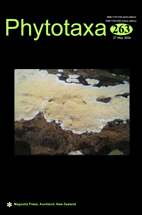Abstract
Adiantum philippense s.l. is a member of once-pinnate Adiantum but comprise several cytotaxa with different ploidies and reproductive modes. According to the differences of cytotypes, the up-to-date revision had identified three subspecies under the A. philippense complex. In Taiwan, different ploidies and reproductive modes had also been found in this species complex, and existence of (a) cryptic species among these cytotypes had been suggested. The current study focuses on taxonomical revision of Taiwanese A. philippense complex. We sampled not only different Taiwanese cytotypes/populations but also all subspecies under A. philippense and the closely related species of them. By re-examining their phylogeny, ploidies, and reproductive modes, we confirmed that the sexual diploids in Taiwan belong to Adiantum menglianense, and this species is phylogenetically separated from A. philippense. We further approved that A. menglianense can be morphologically distinguished from A. philippense by their frond features and spore numbers in sporangia. Another taxon of Taiwanese A. philippense complex is A. philippense subsp. philippense, which is an apomictic and triploidy subspecies. Additionally, we assigned lectotypes of A. menglianense, and revised the hybrid combination of A. × meishanianum. We also provided a key in order to identify two taxa under Taiwanese A. philippense complex and the other once-pinnate Adiantum species in Taiwan.

